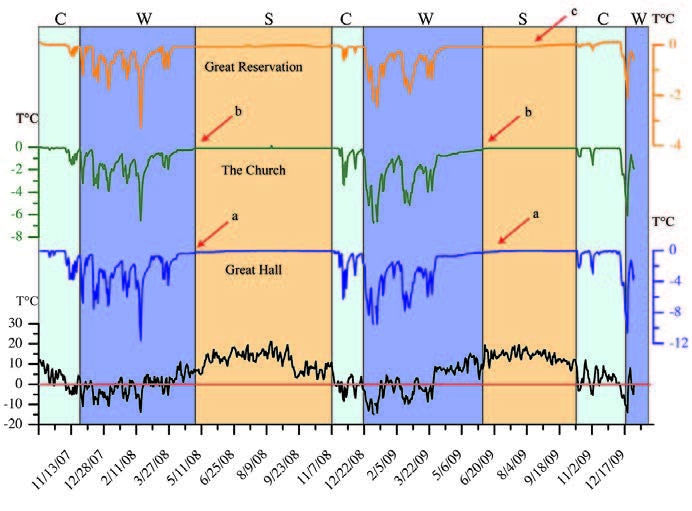The interplay between air temperature and ice mass balance changes in Scărişoara Ice Cave, Romania
DOI:
https://doi.org/10.3986/ac.v40i3.4Abstract
This paper examines the short-term relations established between external and cave air temperature in Scărişoara Ice Cave (Romania) and the role they play upon ice genesis and mass balance changes. Geothermal heat and external climate are the main drivers of the cave’s air temperature, but the ice forming and ablation processes modulate its spatial and temporal characteristics. In the winter half-year, cold air inflow leads to the overcooling of the cave atmosphere and walls and ice formation; while in summer, melting of ice acts as strong thermal sink, keeping the air temperature at 0 °C. In autumn and winter, dynamic cooling of the cave atmosphere leads to ice build-up, whereas in summer, the causality is overturned, the cave air temperature being controlled by the melting ice. The existence of a net heat sink in the cave (melting ice in summer in this case), leads to the overcooling of the non-glaciated parts of the cave as well, a phenomenon that can hamper paleoclimatic reconstructions based on stable isotope studies in speleothems.Downloads
Download data is not yet available.

Downloads
Published
2011-12-28
How to Cite
Perşoiu, A., Onac, B. P., & Perşoiu, I. (2011). The interplay between air temperature and ice mass balance changes in Scărişoara Ice Cave, Romania. Acta Carsologica, 40(3). https://doi.org/10.3986/ac.v40i3.4
Issue
Section
Original papers
License
Authors guarantee that the work is their own original creation and does not infringe any statutory or common-law copyright or any proprietary right of any third party. In case of claims by third parties, authors commit their self to defend the interests of the publisher, and shall cover any potential costs.
More in: Submission chapter




